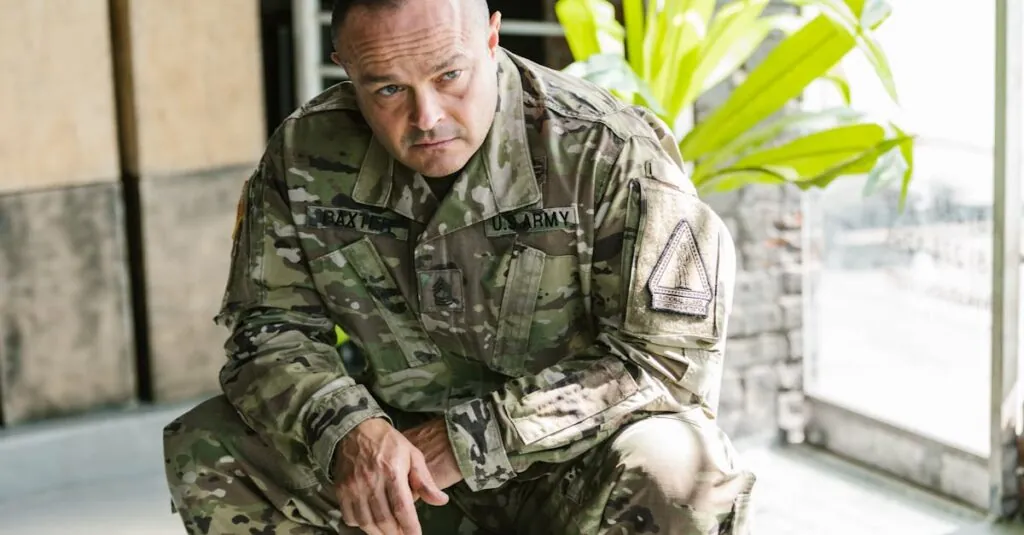In a world where the bold often clash with the brilliant, the intersection of bravery and strategy creates a powerful force. Imagine a knight charging into battle, not just wielding a sword, but armed with a game plan. It’s this blend of guts and guile that transforms ordinary moments into extraordinary victories.
Understanding Bravery Meets Strategy
Bravery and strategy intersect to create powerful outcomes. A deeper understanding of these concepts reveals their significance.
Definition of Bravery
Bravery embodies the quality of facing fear or adversity with courage. This characteristic often manifests in difficult situations where individuals confront challenges head-on. Many people associate bravery with heroic acts or making bold decisions. It’s about taking risks that others may avoid. Displaying bravery requires mental fortitude, especially in high-stakes environments. Historical figures illustrate bravery through their willingness to stand up against oppression or danger. Their bold actions inspire movements and foster change. Ultimately, bravery serves as a catalyst for progress in various aspects of life.
Definition of Strategy
Strategy involves a carefully devised plan to achieve specific goals. It requires analysis, foresight, and decisive action. Effective strategies consider available resources, potential obstacles, and desired outcomes. Businesses often use strategic planning to enhance competitiveness and drive growth. Military campaigns also depend on sound strategies to secure victories. Formulating a successful strategy demands critical thinking and adaptability, especially in dynamic situations. Individuals and organizations alike benefit from a clear direction and measurable objectives. In summary, strategy transforms aspirations into achievable realities by aligning actions with goals.
Importance of the Concept
Bravery merges with strategy, creating a powerful dynamic that influences outcomes in various fields.
Historical Examples
Historical narratives offer rich instances where bravery combined with strategy reshaped events. Joan of Arc exemplified this blend by leading French troops against England during the Hundred Years’ War. Her courageous stance inspired unity while her strategic insights guided military actions. Similarly, General Dwight D. Eisenhower’s planning during World War II demonstrated how strategy and bravery intersect. He meticulously strategized the D-Day invasion, leveraging the bravery of soldiers who stormed the beaches of Normandy. These examples illustrate how individuals throughout history achieved remarkable success by embracing both courage and strategy.
Contemporary Relevance
In modern contexts, the relevance of bravery paired with strategy remains strong. Leaders in businesses often face critical decisions that require both boldness and careful planning. Consider Elon Musk’s approach when launching SpaceX. Musk’s willingness to take risks drove innovation, while strategic execution led to successful missions. Likewise, activists fighting for social change embody this concept. They often confront systemic issues with courage, developing strategic campaigns to enact legislation. Such contemporary examples highlight that merging bravery and strategy continues to foster impactful results across various domains.
Application in Various Fields
Bravery and strategy intersect across diverse fields, enhancing outcomes and fostering success.
Business Environment
In the business environment, leaders combine bold decision-making with strategic planning. Innovative startups often take risks to disrupt established markets while carefully analyzing their competitors. For example, Airbnb revolutionized travel by courageously challenging hotel norms through strategic partnerships. Similarly, companies like Amazon utilize calculated risks to expand into new territories, ensuring long-term growth. Strategic pivots in response to market demands demonstrate that effective risk management leads to powerful transformations and sustainable success.
Military Strategy
Military strategy exemplifies the necessity of bravery and planning. Historical battles showcase how commanders merge courageous moves with tactical foresight. Consider General Eisenhower, whose strategy on D-Day involved rigorous planning that included potential obstacles and contingencies. In modern warfare, leaders adapt strategies based on real-time intelligence, requiring both boldness and precision. Nations often invest resources into developing both strategic frameworks and courageous troops, ensuring they are prepared for unpredictable scenarios.
Personal Development
Personal development thrives on the balance between bravery and strategy. Individuals pursue challenges that require stepping outside their comfort zones, identifying methods to mitigate risk and enhance success. Setting tangible goals involves both the courage to take action and the strategy to create actionable steps. Mentorship programs provide frameworks for aspiring professionals to embrace bravery while following strategic guidance, promoting growth. Commitment to ongoing learning emphasizes that strategic bravery serves as a powerful catalyst for personal growth and achievement.
Characteristics of Successful Implementation
Successful implementation embodies the synergy of bravery and strategy. It requires both courageous actions and meticulous planning to achieve significant outcomes.
Courageous Decision-Making
Courageous decision-making involves taking bold actions despite fear or uncertainty. Leaders exemplify this trait by making tough choices that others might shy away from. Often, these decisions emerge in high-stakes situations where hesitation can lead to missed opportunities. The ability to act decisively instills confidence in teams and stakeholders. Individuals like Joan of Arc and modern entrepreneurs show that courageous choices can drive transformative change. Leaders in business sectors recognize that calculated risks often yield substantial rewards. This characteristic of bravery equips individuals to tackle formidable challenges effectively.
Strategic Planning
Strategic planning encompasses the creation of comprehensive blueprints aimed at achieving defined goals. Informed decisions arise from thorough analysis and assessment of available resources. Organizations excel when they identify potential obstacles early, allowing for proactive responses. Effective strategies incorporate flexibility, enabling adaptation to changing circumstances. Leaders like Dwight D. Eisenhower exemplify this planning, as their foresight underpinned victorious military operations. Crossover into personal development reveals that individuals benefit from a strategic approach to their growth journeys. This foresightedness combines with courage, laying the groundwork for successful initiatives across various fields.
Bravery and strategy form a potent alliance that can redefine success. This dynamic duo empowers individuals and leaders to navigate challenges with confidence and foresight. By embracing courageous actions while grounding them in strategic planning, remarkable transformations become possible.
Whether in historical battles or modern innovations, the blend of these qualities continues to inspire and drive change. As individuals strive for their goals, understanding and harnessing this synergy can lead to extraordinary outcomes. Embracing both bravery and strategy is essential for anyone looking to make a significant impact in their field.






